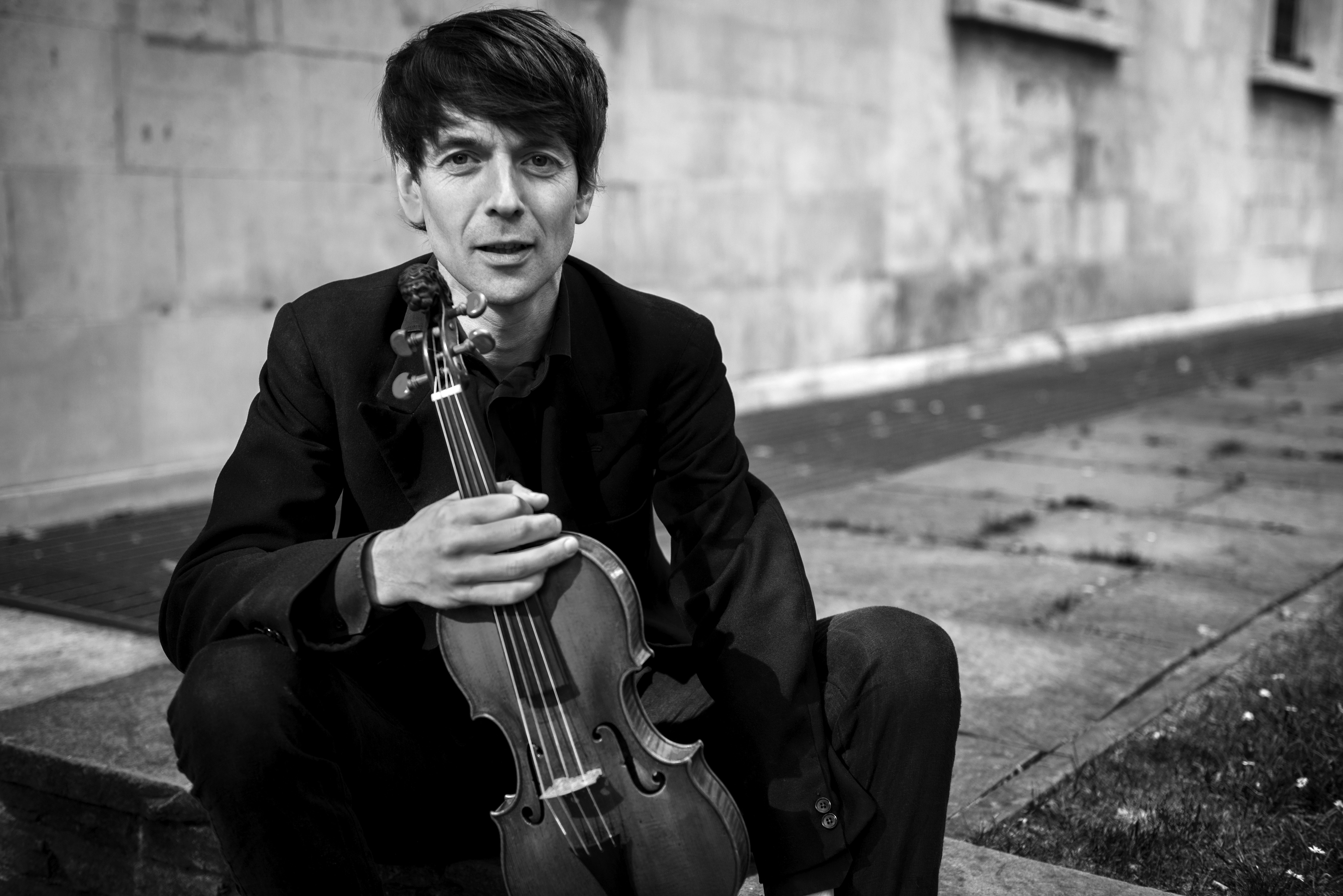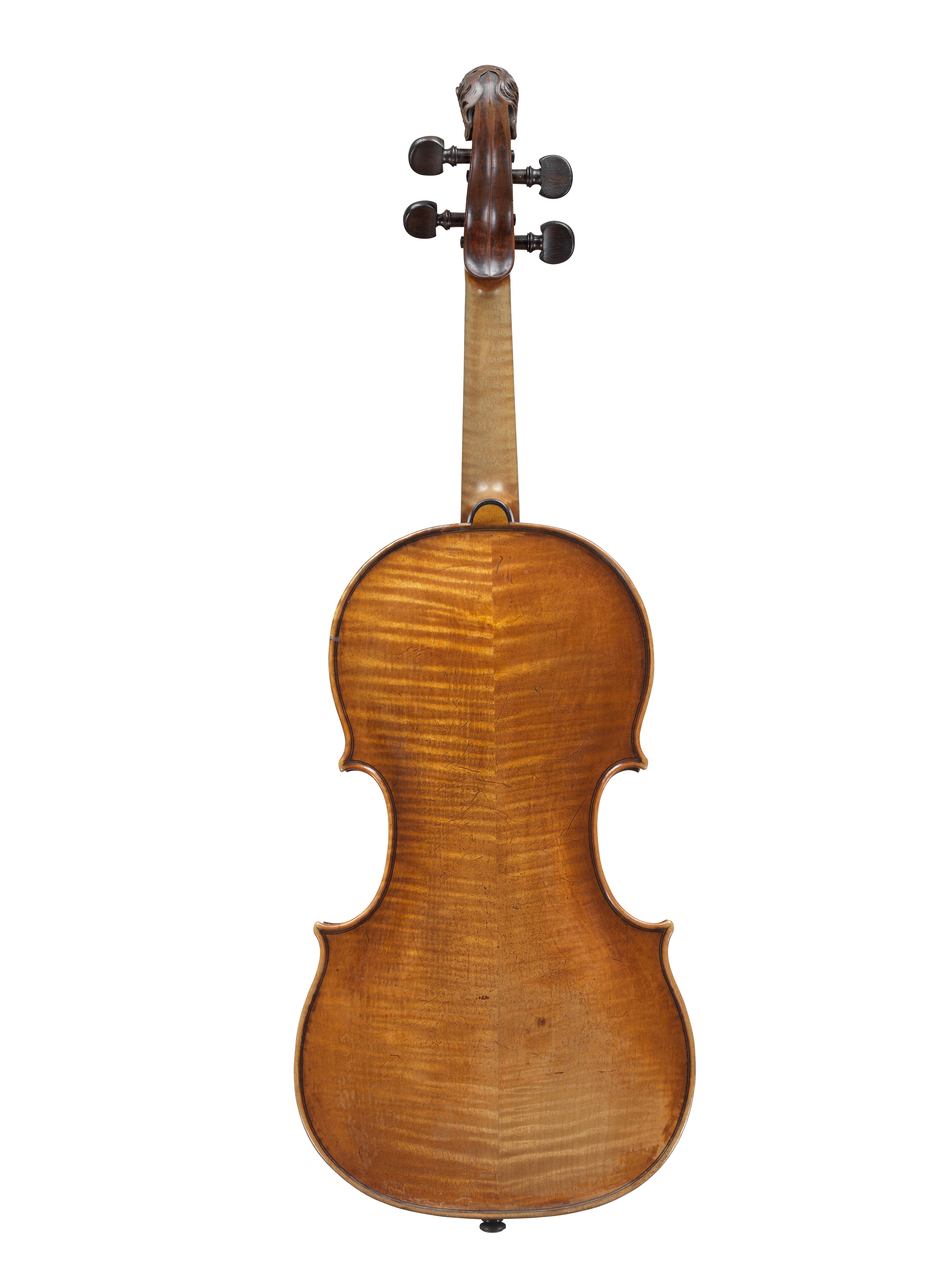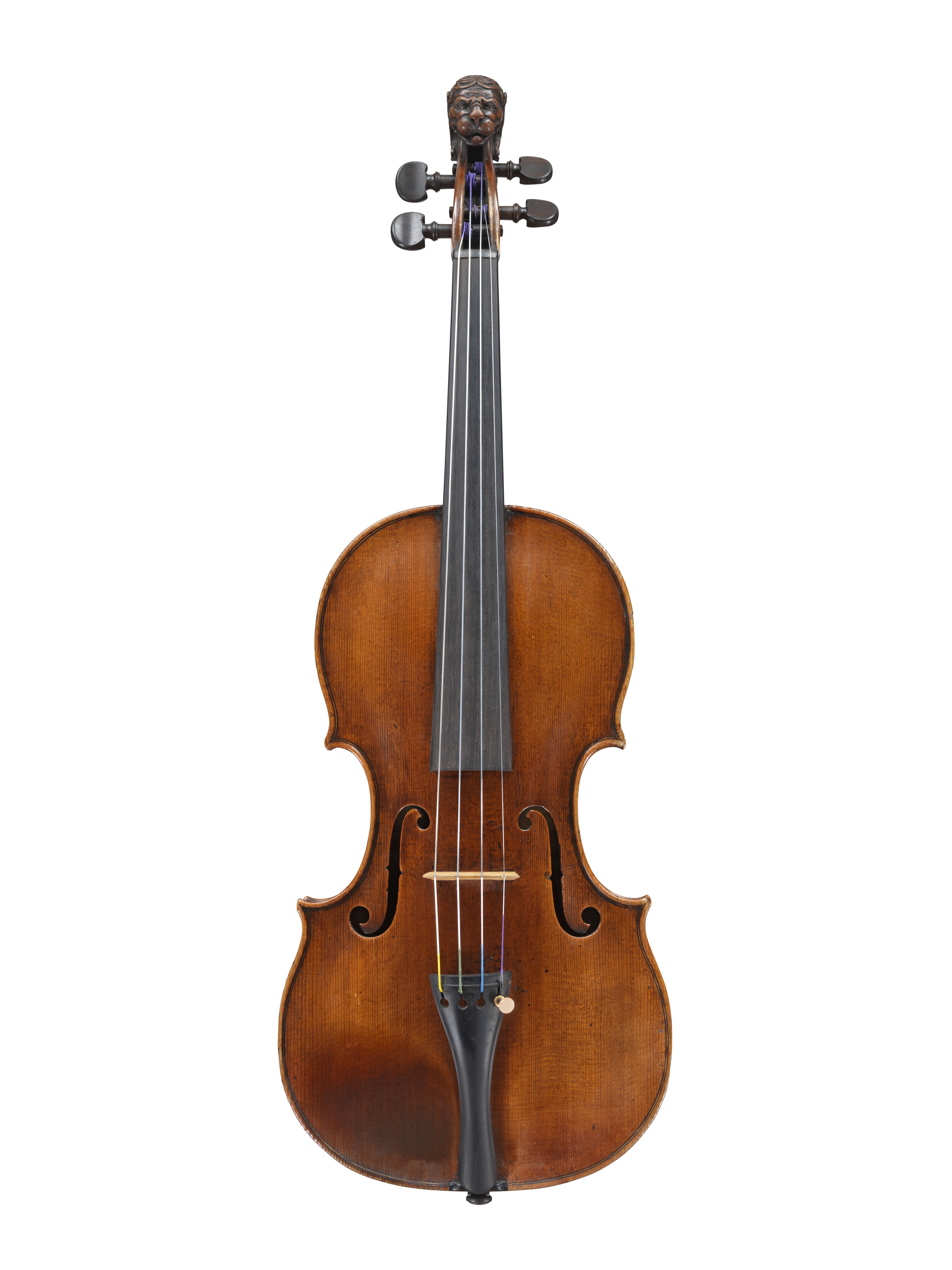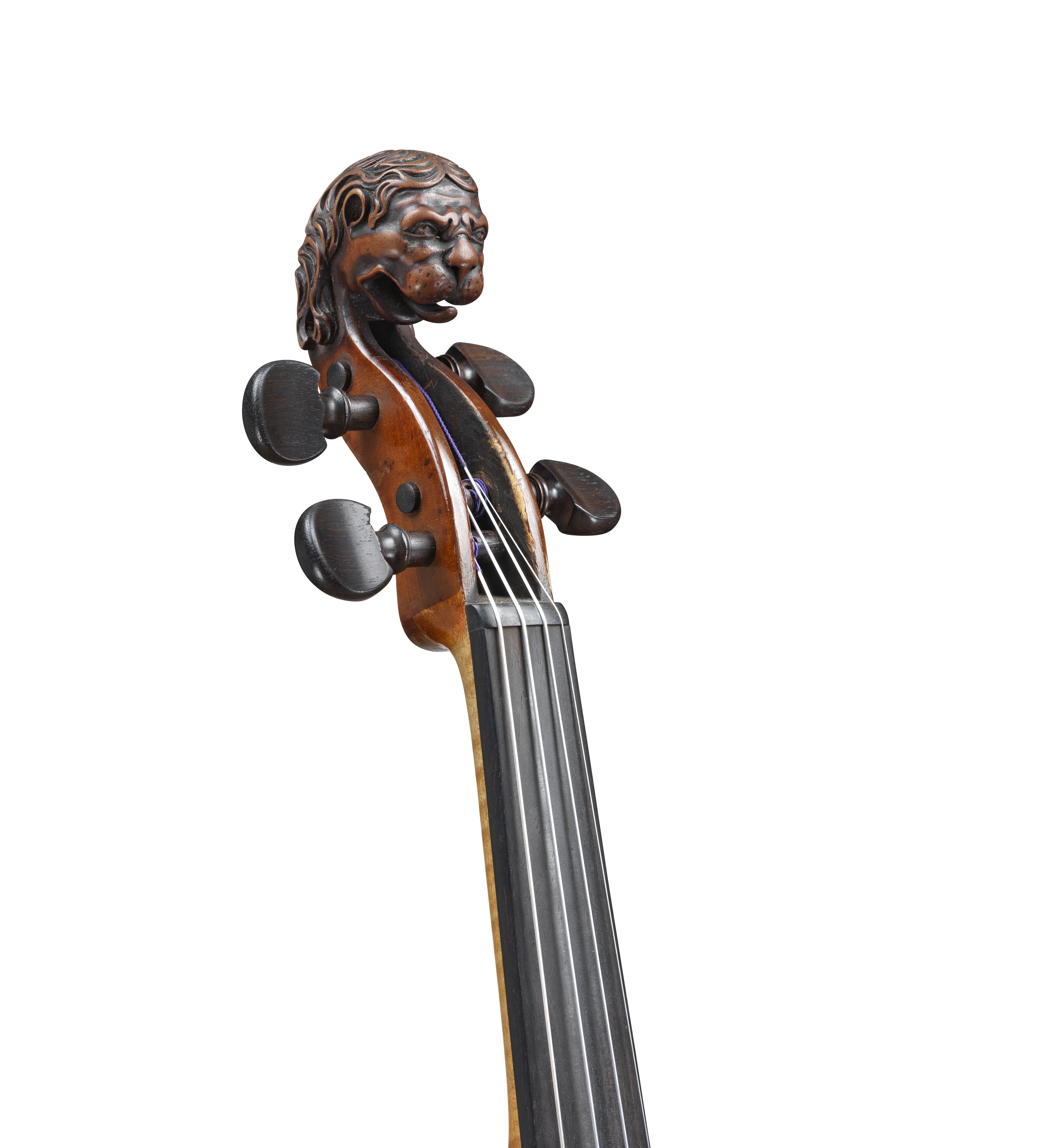Jacob Stainer’s “The King”; an Interview with Matthew Truscott
Matthew Truscott is interviewed by Ariane Todes
Matthew Truscott leads the Orchestra of the Age of Enlightenment and the Mahler Chamber Orchestra, as well as guest leading period and modern orchestras around the world and playing chamber music. He teaches Baroque violin at the Royal Academy of Music.
How did you come across this Stainer?
I had been borrowing instruments – a Tecchler and a Rogeri – but I was always aware that there was a fragility to those circumstances and I had been looking for a while. I wanted something that was appropriate as a Baroque instrument, which was also a good example and had a strong provenance, to appeal to an investment syndicate. When this Stainer came up at auction, I could see it was the epitome of what a Baroque instrument should be – it was the Stainer model that was most prized at that time and most copied since. I was excited before I even met it.
What were your first impressions?
When I first saw it, it was in modern set-up. It looks crisp, clear and luminous, and it sounds that way, too. You get the sense of the core sound being very true – it has almost a searing quality. The D string has a particularly beautiful warmth and the E string has a distinctive, silvery, bright sound. When you go from note to note on quality instruments, they speak with clarity in that moment of transition, even in a trill. Those are the things I loved about it.
How did you go about putting it back into Baroque form?
John Topham Baroqued it for me, doing a very sensitive, loving job. The National Music Museum in South Dakota has a Stainer in even more original condition, with the nail in the neck. Stainer sold it to a nunnery and it went from there straight to the museum, so it’s as pure as it could be. We used those specifications as the model. It has a lot of wood where the neck meets the body and we wondered whether that would be too much, but in the end, we stayed close to the original, so mine is quite chunky around the neck, but works beautifully.
What have you learnt about playing it?
After almost 15 years with it I still feel as though the relationship is changing; we are both in flux, and partly because of each other. Initially, the violin hadn’t been played for over a century, having been various collections. Then it had quite a profound shock with the reconversion, so it needed time to flex and settle. Of course, there are so many variables: set up, humidity, string tension, bows and playing context. In the last few years, and especially after a new bridge from Andrew Fairfax, it has become much more consistent and I have had ready access to its wonderful depth, core and clarity. You have to be quite purposeful about the kinds of sounds, stroke and articulation you want, so in this sense it’s taught me a lot. The overall impression is of something extremely responsive, refined and rich, so there’s a responsibility to explore and exploit all that it offers. It’s such a privilege to come to the case, and then to hold it and feel its resonance and willingness.
What else do we know about its history?
John Dilworth has written a monograph on it so has recorded it in wonderful detail. It’s hard to make out from the label inside whether its date is 1659 or 1669, but the dendrochronology points to the latter, which is a shame, as 1659 is the year of Purcell’s birth, a connection which I’d become used to being a bit sentimental about. In 1669 Stainer was meant to be on trial for heresy because the local priest reported him for having Lutheran tastes and books on cosmology and astrology. He said he was too busy making instruments to attend the trial, so he was excommunicated. It’s remarkable to think that he was making this instrument while he had all that hanging over him. He got into lots of scrapes, and we’re lucky to know so much about his life, even though it’s because of his misfortunes.
How does the history of an instrument affect you as a player?
Bach, Biber and Leopold Mozart all had Stainers – these iconic figures were wielding them at that time and that’s an important part of history. It’s a cliché to say you’re the custodian of an instrument, but with one like this, where so much is known about it and it’s been cared for so lovingly over 350 years, it’s very true.
What other instruments have you played?
I had a Maggini from Ingles & Hayday, which was an opposite instrument in a way, but a wonderful violin. It was long and had been cut down, and had an old soundpost crack. It was a bit like a viola, but I love that depth of sound. I’m also very lucky that with the Mahler Chamber Orchestra job I get to play a 1723 Strad. That’s like another species: incredibly warm, luscious, golden, deep and clear. And yet the core qualities of clarity and resonance feel similar to the Stainer, it’s just that they’re from different families. This is a very privileged time of my life. One day I’ll look back and think, ‘Wow, was I really playing those instruments?’
How do you switch between different instruments?
I find changing bows more of an issue than instruments because it involves more finesse, and there are more significant differences in terms of balance and weight, also in terms of the kind of language you’re trying to nurture. Different sets of muscles need to engage in slightly different ways and it takes a while for this to feel properly fluid. In terms of the instruments, I just try to use my ear as teacher and take my time to hear everything finding its place.

Recent Posts
Categories
- Feature Type
- Instrument Type
-
Maker
- Albani, Mathias (2)
- Amati, Andrea (8)
- Amati, Antonio & Girolamo (6)
- Amati, Girolamo II (6)
- Amati, Nicolò (6)
- Balestrieri, Tommaso (3)
- Banks, Benjamin (1)
- Bazin, Charles Nicolas (1)
- Bergonzi Family (1)
- Bergonzi, Carlo (2)
- Bergonzi, Michele Angelo (2)
- Bernardel, Auguste Sébastien Philippe (2)
- Bisiach, Leandro (2)
- Bultitude, Arthur Richard (1)
- Camilli, Camillo (2)
- Cappa, Gioffredo (2)
- Carcassi, Lorenzo & Tomaso (1)
- Ceruti, Giovanni Battista (3)
- Chanot, George Adolph (1)
- Cuypers, Johannes Theodorus (1)
- Dalla Costa, Pietro Antonio (1)
- Deconet, Michele (1)
- Fendt, Bernard Simon II (1)
- Fendt, Bernhard Simon I (1)
- Gabrielli, Giovanni Battista (1)
- Gagliano, Alessandro (2)
- Gagliano, Ferdinando (1)
- Genova, Giovanni Battista (1)
- Gisalberti, Andrea (1)
- Goffriller, Francesco (1)
- Goffriller, Matteo (1)
- Grancino, Giovanni (4)
- Grancino, Giovanni Battista II (1)
- Guadagnini, Gaetano II (1)
- Guadagnini, Giovanni Battista (7)
- Guarneri 'filius Andreæ', Giuseppe (3)
- Guarneri del Gesù, Giuseppe (5)
- Guarneri of Mantua, Pietro Giovanni (2)
- Guarneri of Venice, Pietro (3)
- Guarneri, Andrea (3)
- Götz, Conrad (1)
- Hill & Sons, W.E. (1)
- Kennedy, Thomas (1)
- Knopf, Carl Heinrich (1)
- Lott, John Frederick (1)
- Lupot, Nicolas (2)
- Mantegazza, Pietro Giovanni (2)
- Mariani, Antonio (1)
- Montagnana, Domenico (2)
- Panormo, Vincenzo Trusiano (1)
- Parker, Daniel (1)
- Peccatte, Dominique (1)
- Platner, Michele (1)
- Pressenda, Giovanni Francesco (1)
- Rayman, Jacob (1)
- Retford, William Charles (1)
- Rivolta, Giacomo (1)
- Rocca, Giuseppe Antonio (2)
- Rota, Giovanni (1)
- Rugeri, Francesco (3)
- Sartory, Eugène (1)
- Scarampella, Stefano (2)
- Schwartz, George Frédéric (1)
- Serafin, Santo (1)
- Sgarabotto, Gaetano (1)
- Sgarabotto, Pietro (1)
- Simon, Pierre (1)
- Stainer, Jacob (3)
- Storioni, Lorenzo (3)
- Stradivari, Antonio (14)
- Stradivari, Francesco (1)
- Stradivari, Omobono (1)
- Tadioli, Maurizio (1)
- Taylor, Michael (1)
- Tecchler, David (2)
- Testore, Carlo Giuseppe (1)
- Tourte, François Xavier (4)
- Tubbs, James (1)
- Voller Brothers (1)
- Vuillaume, Jean-Baptiste (10)
- Watson, William (1)
- da Salò Bertolotti, Gasparo (2)
- Author
- Charity
-
In the Press
- Antiques Trade Gazette (3)
- Archi-magazine.it (1)
- Art Daily (2)
- CNN Style (1)
- Classic FM (2)
- ITV (1)
- Ingles & Hayday (2)
- Liberation (1)
- Life Style Journal (1)
- London Evening Standard (1)
- Paul Fraser Collectibles (1)
- Rhinegold Publishing (1)
- Sotheby's (1)
- Strings Magazine (2)
- Tarisio (2)
- The Fine Art Post (1)
- The Strad (7)
- The Times (1)



